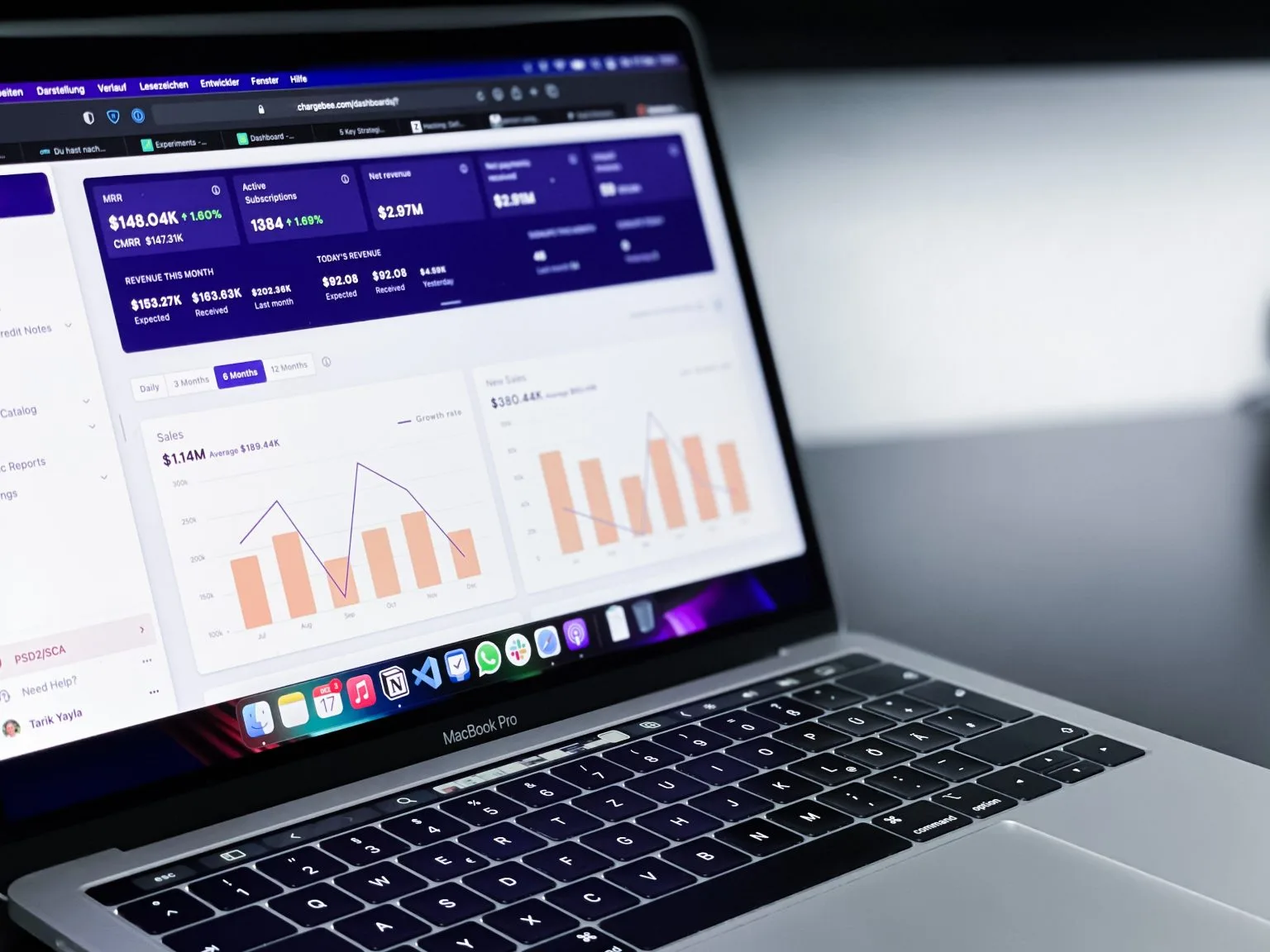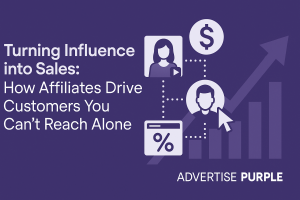
Share
Performance Marketing Definition: A Comprehensive Guide
Ever wondered if there’s a more efficient way to allocate your marketing budget and achieve measurable results? Enter performance marketing, a game-changing approach that has revolutionized the digital marketing landscape. In this blog post, we’ll guide you through the ins and outs of performance marketing, its key components, popular channels, and strategies for maximizing results.
Key Takeaways
- Performance marketing provides businesses with an efficient way to reach their target audience and measure success.
- It involves setting objectives, selecting channels & partners, tracking metrics such as conversion rates and ROI, and optimizing strategies for better results.
- Popular performance marketing channels include affiliate marketing, SEM, social media advertising & native/sponsored content.
Understanding Performance Marketing

Performance marketing, a growing trend in digital advertising, charges advertisers only for specific actions like clicks, leads, or sales. This is why advertisers pay marketing companies that specialize in performance marketing, as it offers businesses an opportunity to allocate their budgets efficiently by only charging when a predefined action is completed, unlike traditional advertising methods which can be costly and uncertain.
The results-oriented nature of performance marketing empowers marketers to target specific audiences and gauge campaign success accurately. Popular performance marketing channels, such as affiliate marketing, search engine marketing (SEM), and social media advertising, enable advertisers to reach their target audience and achieve impressive results in a cost-effective manner. This showcases the benefits of performance marketing in today’s competitive landscape.
Key Components
Components of performance marketing include:
- The establishment of objectives
- Channel selection
- Outcome monitoring
- Campaign refinement
By setting clear goals and metrics, performance marketers can evaluate the success of their campaigns and make data-driven decisions to optimize their marketing efforts.
Choosing the right channels and partners ensures that ads reach the most relevant audience segments, while ongoing tracking and optimization enable advertisers to continuously improve campaign performance and ROI.
Performance vs. Traditional Marketing
Unlike performance marketing, brand marketing often focuses on generating brand awareness and relies on ads impressions rather than user actions. This makes it difficult for businesses to measure the direct impact of their campaigns and optimize their marketing strategies.
In contrast, performance marketing underlines measurable outcomes and necessitates payment only when desired objectives are achieved, thus lowering risk and enhancing return on investment. This approach provides greater transparency and control over ad spend, allowing businesses to make more informed decisions and achieve better results.
How Performance Marketing Works
Harnessing performance marketing requires businesses to adopt a methodical process, including the setting of clear objectives and metrics, choosing suitable channels and partners such as marketing companies, and continuous campaign monitoring and refinement for enhanced results. To achieve this, businesses often pay marketing service providers to ensure the best possible outcomes in their performance marketing work.
This process enables advertisers to evaluate the effectiveness of their efforts, allocate resources efficiently, and make strategic adjustments based on real-time data. By continuously analyzing campaign performance and making data-driven decisions, businesses can optimize their ad spend and achieve remarkable results.
Setting Goals and Metrics
The establishment of clear goals and metrics is a cornerstone of any performance marketing campaign, serving as a reference point for success measurement and effective resource allocation. By establishing specific objectives, such as increasing website traffic, generating leads, or driving sales, performance marketers can develop targeted strategies that maximize the impact of their campaigns and ensure the best possible return on investment.
With well-defined goals and metrics in place, performance marketers can track the progress of their performance.
Choosing Channels and Partners
Choosing suitable channels and partners is pivotal to ensure that ads reach the target audience and bring about the intended results. This may involve partnering with affiliate networks, advertising on popular social media platforms, or utilizing search engine marketing (SEM) to reach potential customers.
By carefully evaluating the performance of each channel and partner, businesses can identify the most effective combinations and allocate their resources accordingly, maximizing the overall success of their performance marketing campaigns.
Tracking and Optimization
Tracking and optimization are integral aspects of performance marketing, as they enable advertisers to monitor campaign performance, analyze data, and make adjustments to improve outcomes. By continuously evaluating key metrics, such as conversion rates, engagement, and ROI, performance marketers can identify areas for improvement and make data-driven decisions to optimize their campaigns.
This iterative process ensures that businesses are constantly refining their strategies, increasing the effectiveness of their efforts, and ultimately achieving better results.
The Role of Performance Marketing in Digital Marketing Strategy
Performance marketing has a significant role in digital marketing strategy, offering tangible results and supplementing long-term initiatives. By integrating performance marketing into a broader digital marketing plan, businesses can achieve a more comprehensive approach, combining short-term and long-term tactics to reach their objectives.
This versatile strategy allows businesses to efficiently allocate their resources, optimize their advertising spend, and ultimately achieve their marketing goals.
Integrating Performance Marketing
Incorporating performance marketing into a digital marketing strategy enables a more comprehensive approach by combining both short-term and long-term tactics, including online marketing. This balanced approach allows businesses to achieve their immediate objectives, such as driving website traffic or generating leads, while also working towards longer-term goals, such as building brand awareness and customer loyalty.
By integrating performance marketing into the overall digital marketing strategy, businesses can optimize their efforts and maximize their marketing success.
Balancing Short-term and Long-term Goals
Striking a balance between short-term performance marketing goals and long-term digital marketing objectives is vital in crafting an effective and holistic marketing strategy. By setting short-term goals to increase brand awareness and generate leads, and long-term goals to nurture customer relationships and build loyalty, businesses can create a well-rounded marketing strategy that delivers results.
Regularly evaluating the success of both short-term and long-term efforts ensures that resources are allocated effectively and that marketing objectives are achieved.
Popular Performance Marketing Channels and Marketing Efforts
Prominent performance marketing channels include:
- Affiliate marketing
- Search engine marketing (SEM)
- Social media advertising
- Native advertising or sponsored content
Each of these performance marketing channels offers unique benefits and targeting options, allowing businesses to reach their target audience and achieve their marketing objectives.
By leveraging the strengths of these channels and tailoring their strategies to suit their specific goals, performance marketers can optimize their campaigns and maximize their results.
Affiliate Marketing
Affiliate marketing is a form of performance marketing where advertisers partner with affiliates, such as bloggers or influencers, who promote their products or services in exchange for a commission based on specific actions, such as clicks, leads, or sales.
This channel allows businesses to tap into the power of established audiences, driving targeted traffic and generating measurable results. By carefully selecting affiliates who align with their target audience and brand values, businesses can optimize their affiliate efforts and achieve impressive results.
Search Engine Marketing (SEM)
SEM is a popular performance marketing channel that focuses on placing paid ads on search engines like Google, Bing, and Yahoo, driving targeted traffic to websites or landing pages. By bidding on keywords related to their products or services, businesses can ensure that their ads appear at the top of search engine results pages, increasing visibility and attracting potential customers. In addition to SEM, search engine optimization is another crucial aspect of online marketing that businesses should consider.
SEM offers a cost-effective way to reach a highly targeted audience, making it an attractive option for businesses looking to optimize their performance efforts.
Social Media Advertising
Leveraging platforms like:
Social media advertising enables businesses to reach and engage with their target audience in a highly personalized and interactive way. By creating eye-catching ads that resonate with their audience, businesses can generate engagement, drive traffic, and ultimately achieve their marketing goals.
Social media advertising, a crucial aspect of social media marketing, is an increasingly popular performance marketing channel due to its ability to reach large, engaged audiences and deliver measurable results.
Native Advertising and Sponsored Content
Native advertising and sponsored content offer a less intrusive and more engaging ad experience for users. By creating content that is:
- relevant
- valuable
- trustworthy
- credible
Businesses can build trust and credibility, ultimately driving conversions and boosting brand awareness.
This performance marketing channel is particularly effective for content-driven campaigns, as it allows advertisers to reach their target audience in a more natural and authentic way.
Measuring Success in Performance Marketing
Assessing success in performance marketing is crucial for gauging campaign effectiveness and making educated decisions about strategy and resource allocation. By tracking key metrics such as conversion rates, engagement, and return on investment (ROI), businesses can gain valuable insights into the performance of their campaigns and identify areas for improvement.
Regular analysis of these metrics allows performance marketers to make data-driven decisions and optimize their strategies for better results.
Conversion Metrics
Conversion metrics like clicks, leads, and sales are pivotal in determining the effectiveness of performance campaigns. By monitoring these metrics, businesses can assess the success of their campaigns in driving desired outcomes and allocate resources accordingly.
By constantly tracking and analyzing conversion metrics, performance marketers can identify areas for improvement, make strategic adjustments, and optimize their campaigns for increased ROI.
Engagement Metrics
Engagement metrics, such as views, likes, and shares, provide insights into the relevance of ads and the level of interest from the target audience. These metrics can help businesses determine the effectiveness of their campaigns and identify areas for improvement.
By monitoring engagement metrics and making data-driven adjustments to their strategies, businesses can optimize their efforts and achieve better results.
Return on Investment (ROI)
Return on investment (ROI) is a crucial metric for determining the overall profitability of performance marketing campaigns. By calculating the ratio of the profit earned on an investment to the cost of that investment, businesses can assess the success of their campaigns and make informed decisions about budget allocation and strategic direction.
Monitoring ROI and making data-driven adjustments to campaigns based on this metric can help businesses optimize their efforts and achieve greater success.
Performance Marketing Campaigns: Tips for Maximizing Performance Marketing Results
To amplify your results, consider adopting strategies like targeting and segmentation, creative optimization, along with ongoing testing and enhancement. These tactics can help businesses enhance ad effectiveness, boost ROI, and achieve their marketing objectives.
By adopting these best practices and regularly analyzing campaign data, businesses can optimize their efforts and achieve exceptional results.
Targeting and Segmentation
Targeting and segmentation imply pinpointing and engaging the most relevant audience segments to boost ad effectiveness and ROI. By analyzing user demographics, behaviors, and preferences, businesses can create customized marketing messages and campaigns tailored to each audience segment.
This level of personalization can lead to higher engagement, conversion rates, and overall marketing performance, making targeting and segmentation crucial components of a successful performance marketing strategy.
Creative Optimization
Creative optimization centers around enhancing ad design, messaging, and calls-to-action to bolster user engagement and conversion rates. By testing different creative elements, such as images, headlines, and ad copy, businesses can identify the most effective combinations and make data-driven adjustments to their campaigns.
Creative optimization is an essential aspect of performance marketing, as it enables businesses to enhance the impact of their ads and achieve better results.
Continuous Testing and Improvement
Continuous testing and enhancement entail routine analysis of campaign data, pinpointing areas for improvement, and making necessary adjustments to boost performance. By monitoring key metrics, such as conversion rates, engagement, and ROI, businesses can gain valuable insights into the performance of their campaigns and make data-driven decisions to optimize their strategies.
This iterative process ensures that businesses are constantly refining their performance marketing efforts, leading to increased effectiveness and better results.
Summary
In conclusion, performance marketing is a powerful and efficient approach to digital marketing that focuses on measurable results and maximizes ROI. By understanding the key components, selecting the right channels and partners, and continuously tracking and optimizing campaigns, businesses can achieve impressive results and reach their marketing objectives. By implementing strategies such as targeting and segmentation, creative optimization, and continuous testing and improvement, businesses can harness the full potential of performance marketing and drive success in today’s competitive digital landscape.
Frequently Asked Questions
What is the meaning of performance marketing?
Performance marketing is a type of digital advertising that involves paying for results such as clicks or conversions. It is based on the outcomes of specific actions, meaning brands only pay after their objectives have been met.
This type of advertising is becoming increasingly popular as it allows brands to track their return on investment (ROI) and measure the success of their campaigns. It also allows them to target their target audience.
What is the example of performance marketing?
Performance marketing is an alternative to traditional marketing where payments are made dependent on how the campaign performs – such as paying per click or per sale.
What is performance marketing vs digital marketing?
Performance marketing and digital marketing differ in their approach, with performance marketing utilizing targeted campaigns to achieve specific goals and digital marketing focusing on reaching a wide audience and building brand awareness.
Payment models also differ, with performance marketing requiring payment only when a desired outcome occurs.
What is the goal of performance marketing?
Performance marketing is an online advertising strategy which measures the impact of various instruments such as SEO, affiliate marketing, or display advertising in order to improve a company’s performance, drive actions, track and measure those actions, attribute ROI, and ultimately make it more effective.
How does performance marketing differ from traditional marketing?
Performance marketing emphasizes measurable results and only charges after objectives are fulfilled, reducing risk and increasing ROI, compared to traditional marketing which often concentrates on building brand recognition and depends on ads views rather than user behavior.]
About Advertise Purple
Advertise Purple is the #1 affiliate management agency in the USA. We help clients across the country to super-charge their affiliate revenue and get the most out of the channel. In fact, our clients see an average of 131% growth in affiliate sales within our first six months of campaign management. This is done for any niche, whether you are in it for direct e-commerce sales or lead generation.
Through our extensive network of high-quality affiliates, we’ve driven over $22 million in revenue for clients. With over nine years of successful affiliate management experience and a team of dedicated experts, we’re revered by networks and publishers as the leading affiliate management company.
If you want to step up your performance marketing or need help developing your affiliate network, our team can help. Simply send us a message using the form below, call us on 866.833.0574 or email [email protected]. We’d love to hear from you!











